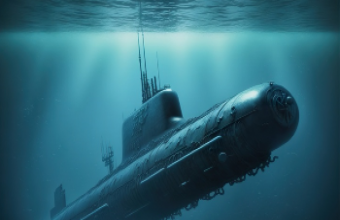According to several news reports, it has been revealed that the company responsible for the vanished Titanic had been warned multiple times about potential safety issues during its development. Currently, a growing international fleet of ships and aeroplanes are searching for the Titan, operated by OceanGate Expeditions. Since 2021, this undersea exploration company based in Everett, Washington has been organizing annual expeditions to the Titanic.
The director of marine operations at OceanGate, David Lochridge, wrote an engineering report in 2018 expressing concerns about the submersible's development. According to the report, further testing was necessary and passengers could be endangered at "extreme depths." OceanGate subsequently sued Lochridge, accusing him of violating a non-disclosure agreement. In turn, Lochridge filed a counterclaim alleging wrongful termination for raising concerns about testing and safety. The case was settled on undisclosed terms a few months after it was filed.
Are the Claims of Improper NDT Testing, the Reason for Catastrophic Implosion of Titan?
Lochridge's main concerns revolved around the company's decision to rely on sensitive acoustic monitoring, which involved detecting cracking or popping sounds made by the hull under pressure, instead of conducting a hull scan. According to Lochridge, the company informed him that no equipment existed to perform such a test on the 5-inch-thick carbon-fiber hull. In his counterclaim, Lochridge highlighted the problem with this acoustic analysis method, as it would only detect when a component was about to fail, often mere milliseconds before an implosion, and would not identify existing flaws before pressurizing the hull. Additionally, Lochridge stated that although the submersible was designed to reach depths of 4,000 meters (13,123 feet), matching the depth of the Titanic wreck, the passenger viewport was only certified for depths of up to 1,300 meters (4,265 feet). OceanGate refused to cover the costs of manufacturing a viewport certified for 4,000 meters. Lochridge argued that OceanGate's decisions would expose passengers to extreme danger in an experimental submersible, as mentioned in his counterclaim. Unfortunately, the U.S. Coast Guard has confirmed that all five passengers aboard the tourist submarine, Titan, are presumed deceased. The Titan, operated by OceanGate Expeditions, disappeared during its mission to explore the renowned Titanic wreckage.
The Coast Guard described the incident as a "catastrophic implosion," and the search conducted by multiple countries ultimately led to the discovery of the Titan's wreckage on the ocean floor. This tragic outcome deeply affects the passengers and their families involved in this unfortunate event. As the submersible's oxygen supply has run out, the rescue efforts of the Submarine have reached a critical stage. The vessel was designed to sustain a crew of five for 96 hours, and this limit has now been exceeded. Despite ongoing search operations, experts hold increasingly pessimistic views on the chances of survival, considering the limited remaining time and the uncertainties surrounding the sub's location and potential hazards.













